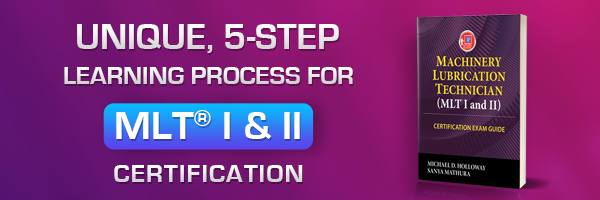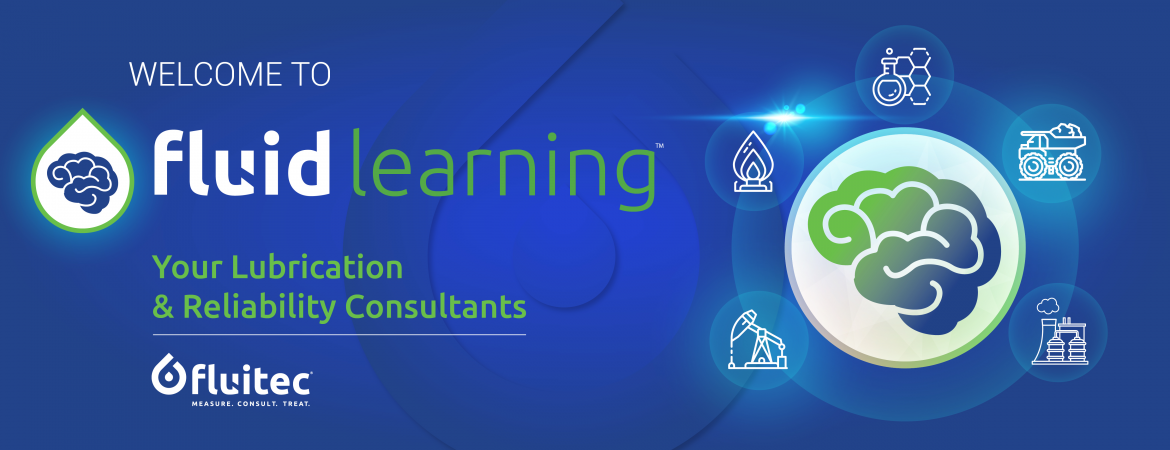
The MLT (Machinery Lubrication Technician) exams are developed by ICML (International Council for Machinery Lubrication) and is seen as the entry level certification for those who are working in the field of lubrication. When I entered the reliability field (years ago!), it was one of the credentials I was told that I should obtain to allow others to take me seriously since I was a young female entering a male dominated world. Back then, the training for these exams usually took place as a week-long intensive course in the US followed by the exam. For me, this would have meant travelling to the US, studying for the exam, catching up on work, balancing some jet lag and then writing the exam. This approach didn’t work for me.
I may have taken the unconventional route and written my first book, “Lubrication Degradation Mechanisms – A Complete Guide” published by CRC Press and obtained my MLE (Machinery Lubrication Engineer) certification before thinking of these exams. After achieving my MLE and becoming the first person (and still the only female) in the Caribbean, I went on to secure the Varnish badges from ICML. These are the VIM (Varnish and Deposit Identification Mechanisms) & VPR (Varnish and Deposit Prevention and Removal) badges from ICML. I was the first female in the world to achieve these and to date, still the only female with these badges. I pursued all of these courses via On demand sessions from the master himself, Michael Holloway of 5th Order Industry.

Everything at the right time
At the end of 2020, Mike approached me to write a guide book for the MLT Level I & II exams. My first question to him was, “How can I write the book for these exams if I don’t have these certifications?”. He assured me that the MLE content covered the topics in MLT I & II and then a lot more. We decided to work on writing the book and get the certification before the book was published. Surely enough after we submitted the pages to the publishing house, I began my preparation for the exam using Mike’s On Demand videos and the book we had just developed for these exams! I was preparing myself to take the MLT I first and then the MLT II right afterwards. Plus, Mike had a really good deal on the course content! How could I refuse?!
Unfortunately, life happened, or in this case death. In November, one of my parents contracted COVID and did not survive. While taking care of them, we also contracted COVID, the one with the long haul effects. Needless to say during the following months, I could not retain any information nor sit an exam. One of the side effects from COVID was brain fog and even after a couple of months this did not clear up to the point where I felt that I was ready to retain any information. I had forgotten basic info which would have been at the forefront of my memory and really struggled for some time to come to terms with everything that had happened and the new journey which lay before us. Our lives were changed forever.

Exam preparation
In May, I finally began to feel a bit better and restarted my MLT Journey with Mike’s videos and our certification book as our guide. This time, I had a physical copy of the book on my desk as it was already published (maybe things do work out in their own special timings). Getting back into study mode while running the business and dealing with never ending paperwork and legalities which surround a death was tricky. I was so grateful for the on demand courses to allow me to study on my own time, at my own pace, when I was truly ready. Also being able to book the exam and complete it virtually from my own space was terrific! The time and anxiety associated with taking an exam is enough, we don’t need to include traffic, getting to a physical location and the environmental conditions of the exam room into the mix!
If you’re preparing for the MLT exam, you have to complete Level I first. There is no skipping ahead to Level II as during the sign up process for MLT II, you have to include your MLT I ID#. My advice for scheduling the exams would be to schedule one on the Monday and the other by Friday of the same week.
Exam scheduling
Here are some tips on scheduling your exam:
- When you sign up and pay for the exam you should allow 1-2 business days for processing.
- Once you have been approved, then you can set your exam date. You will be notified via email with instructions on the next steps.
- MLT I & II are both 3 hours, so choose your timeslot carefully.
- Exam results take 2-3 days to process. You will receive an email with your results and grades in the various areas of the BoK.
- Once you have passed MLT I and gotten your ID#, you should sign up for the MLT II exam immediately, if you intend to pursue it afterwards.
- This will then take 1-2 days to process again. You will receive another email letting you know that you can choose your exam date.
- Then, it’s on to schedule your exam date.
- After the exam, you will have to wait for 2-3 business days to get your results.
Ideally, one should schedule a 2 week window for taking both the MLT I & II exams and receiving the results. You cannot take both exams in one day (just yet!).
Exam day
Once you enter the Examity portal, you will be asked to suggest a couple of security questions. Please choose these wisely and remember your answers as they will be asked on the day of the exam by the proctor. My advice would be to check the exam portal one day before your exam to familiarize yourself with the questions and answers as these are blocked out on the day of the exam. You should try to log on to the portal 30 minutes before the actual exam just to make sure you can get in and everything works. You will not be able to enter the “exam room” until 15 minutes before your appointed time. Afterwards, the Proctor will do their checks and balances with you where they ask to see your government issued identification (be sure your picture and expiry date are on the same side of this identification). They will also ask to see a 360 view of the room in which you are sitting to ensure it is clear.
During the exam, you can flag questions which you are not sure about and always go back to those afterwards. When you get to the last question, the button turns to submit but you don’t have to use this button until you are ready. Use your time to go back to your flagged questions, decipher the best suited answer and then press forward with your exam. Once you have finished and clicked the “Done” button, you should notify your proctor that you have finished the exam. They also have to close off the session on their side, so this is important to remember. You will see a page which comes up saying exam results, don’t panic! These are not your actual results, just a statement of the time you took. You will get your actual results within the next few days.
The MLT I & II Body of Knowledge
Here’s a look at the BoK for MLT I and MLT II. You will realize that the MLT II builds on the content covered in MLT I. Depending on where you are on your journey to machine lubrication, you can opt to take the both tests (one after the other of course) or simply start with the MLT I and then work up to the MLT II exam. In our certification guide, we used a Unique 5 Step process for learning:
- Familiarize
- Find Socrates
- Be the Exam
- Practice Exam
- Explore
This unconventional method has proven to be exceptionally effective, not for only passing the exam, but to truly retaining the knowledge and becoming an expert in the content you’re studying. Certification requirements are discussed throughout the work, making this the ideal resource for prospective MLT I and/or MLT II certification candidates.
Here’s a quick overview of the content covered in the book:
- Notes Outline: For the reader to complete. Aids in organizing ideas and thoughts.
- Guided Cooperative Argument: A dialogue between authors concerning the topics. Helps answer questions that are asked on the job.
- Statements of Truth and Exam Development: From the recommended Body of Knowledge, with space to develop your multiple-choice questions. Develops critical thinking process and understanding of how the exam questions are structured.
- Body of Knowledge Outline: Works as a reference to help answer any questions that may arise.
- Practice Exam: A mock exam designed to familiarize the reader with taking a multiple-choice test that is similar in structure and content to the real one.
- Glossary & Appendices: List of common terms, charts, and tables with which all certification candidates need to be familiar.
I hope this helps anyone on their journey towards achieving their ICML MLT certifications. Good luck to those who are getting ready to take these exams.












